Once upon a time there was a planet called Mars, a world of red sands, canals and endless adventure. I remember it well, for I went there often as a child. I come from a blue-collar, working-class background. My family never had much money. We lived in a federal housing project in Bayonne, New Jersey, never owned a car, never saw much of anywhere. The projects were on First Street, my school was on Fifth Street, and for most of my childhood those five blocks were my world.
It never mattered, though, for I had other worlds. A voracious reader, first of comic books (superheroes, mostly, but some Classics Illustrated and Disney stuff as well), then of paperbacks (science fiction, horror and fantasy, with a seasoning of murder mysteries, adventure yarns, and historicals), I travelled far and wide while hunched down in my favourite chair, turning pages.
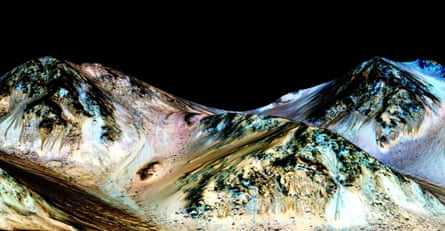
I soared among the skyscrapers of Metropolis with Superman, fought bad guys in Gotham City with Batman, swung between the water towers of Manhattan with Spider-Man. I sailed the South Seas with Long John Silver and Robert Louis Stevenson, and swam beneath them with Aquaman and Prince Namor the Submariner. Scrooge McDuck took me to Darkest Africa to search for King Solomon’s Mines, and H Rider Haggard returned me there. I swashed and buckled and fought the Cardinal’s men with the Three Musketeers and Dumas père, sang of the Green Hills of Earth with the blind singer Rhysling and Robert A Heinlein, trekked across Big Planet with Jack Vance, sped through the Caves of Steel with Isaac Asimov, and dared the terrors of the Mines of Moria with JRR Tolkien. Books became my passport to Arrakis and Trantor, Minas Tirith and Gormenghast, Oz and Shangri-La, all the lands of myth and fable – and to the planets, moons and asteroids of our solar system as well. Frozen Pluto (still a planet!), where the sun was just a bright star in the sky. Titan, with Saturn and its rings looming overhead. Mercury, one face turned eternally toward the sun, where life could only survive in the “twilight zone” between day and night. Mighty Jupiter, whose fearsome gravity made its inhabitants stronger than a hundred men. Venus, hidden beneath its shroud of cloud, where web-footed natives hunted dinosaurs through fetid, steaming swamps.
And Mars.
Growing up, I think I went to Mars more often than I went to New York City, though Manhattan was only 45 minutes and 15 cents away by bus.
Mars, though … I knew Mars inside and out. A desert planet, dry and cold and red (of course), it had seen a thousand civilisations rise and fall. The Martians that remained were a dwindling race, old and wise and mysterious, sometimes malignant, sometimes benevolent, always unknowable. Mars was a land of strange and savage beasts (thoats! Tharks! sandmice!), whispering winds, towering mountains, vast seas of red sand crisscrossed by dry canals, and crumbling porcelain cities where mystery and adventure lurked around every corner.
Mars has always had a certain fascination for us Earthlings. It was one of the original planets, the Fab Five of antiquity (along with Mercury, Venus, Jupiter and Saturn), the “wanderers” who refused to march in step with the stars, but made their own way through the heavens. And Mars was red, its colour visible even to the naked eyes of the ancients; the colour of blood and fire. Small wonder the Romans named it after their god of war. Galileo’s observations of Mars through his telescope, Cassini’s revelation of the polar ice caps in 1666, and Asaph Hall’s discovery of the Martian moons Phobos and Deimos in 1877 only served to make the red planet even more appealing; but it was Italian astronomer Giovanni Schiaparelli’s announcement that he had observed “canali” on Mars that cinched the deal.
The name Schiaparelli gave the dark lines he saw on the Martian surface actually means “channels”, but when reported in English it was rendered as “canals”. Channels can be natural; canals are artificial. And 1877 was part of an era when man-made canals were very much in the public consciousness. The Erie canal, completed in 1825, had played a key role in North America. The Suez canal had opened in 1869, connecting the Mediterranean to the Indian Ocean. The French would begin work on the Panama canal just a few years later, in 1881; the Americans would finish it in 1914. Each had been a massive undertaking, a wonder of modern engineering, and if there were canals on Mars … well, surely there must be canal builders as well. Surely there must be Martians.
Small wonder then that when HG Wells sat down a few years later to write a “scientific romance” of alien invasion called The War of the Worlds, he looked to the red planet for his invaders. “Across the gulf of space,” Wells wrote, “minds that are to our minds as ours are to those of the beasts that perish, intellects vast and cool and unsympathetic, regarded this earth with envious eyes, and slowly and surely drew their plans against us.”
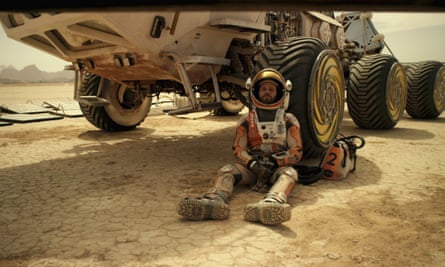
Schiaparelli’s observations had awakened the interest of scientists as well as novelists, in particular the American astronomer Percival Lowell, who studied the red planet extensively, finding more every time he looked, drawing extensive, intricate and detailed maps of the Martian surface, complete with canals, double canals, oases. He published his findings and theories in three enormously popular and influential books: Mars (1896), Mars and Its Canals (1906), and Mars as the Abode of Life (1908), promulgating the theory that the canals, long and straight and obviously artificial, had been built by a Martian race to carry water from the polar ice caps to the vast deserts of their arid planet.
Other astronomers turned their telescopes on Mars as well. Some of them saw Lowell’s canals, confirming his findings at least in part. Others saw only Schiaparelli’s channels, and put them down as natural features. Some saw nothing at all and insisted all these canals were optical illusions. By and large, the astronomical community remained sceptical of Lowell and his observations, but the idea of Martian canals, and the Martian civilisation it suggested, had taken firm root in the public consciousness.
Especially in the minds of the storytellers. Wells had given the world Martians, but he himself never took us to Mars. That task he left to a (much lesser) writer named Garrett P Serviss, who published a sort of sequel to War of the Worlds called Edison’s Conquest of Mars in 1898. Though largely (and deservedly) forgotten today, the Serviss novel was widely read and influential in its day, and was the first to carry the reader across the gulf of space to the red planet. But it was a later writer who truly brought that landscape to life.
“Normal Bean”, he named himself when he sent his story off to the editors at The All-Story magazine in 1911. Someone thought that was a typo (it wasn’t), and “Under the Moons of Mars” was bylined “Norman Bean” when it began its serial run in February 1912. The writer behind the pseudonym was Edgar Rice Burroughs. The serial would be retitled “A Princess of Mars” when its instalments were collected together and republished in book form in 1917. Under that title, it would remain in print for the better part of a century, and give birth to numerous sequels, spin-offs and imitations.
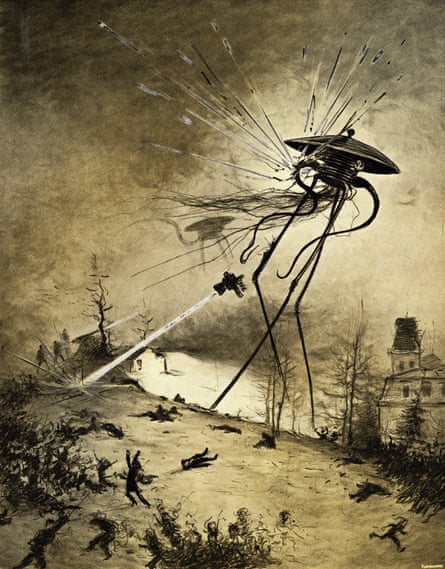
Barsoom was the name that ERB’s Martians gave their dying desert planet. Burroughs took Lowell’s notions and ran with them, filling up the red planet with Tharks and thoats and flying boats, with radium rifles and white apes and atmosphere plants, with daring swordsmen and egg-laying princesses clad only in jewels. Though never a great writer, ERB was a master storyteller, and in John Carter and Dejah Thoris he created two characters that generations of readers would come to love and cherish, their popularity eclipsed only by that of his other creation, the jungle lord called Tarzan. Ten more Barsoom novels would follow over the next half century, some featuring John Carter, some other characters, but the world that Burroughs had created would remain the true star of the series, from the first to the last.
Barsoom was his, and his alone. But Lowell’s books and theories were out there for all to read, and Otis Adelbert Kline, Stanley G Weinbaum, CS Lewis, Jack Williamson, Edmond Hamilton and myriad other writers soon joined in with their own takes on Mars and its inhabitants. How many tales were set on Mars during the heyday of the science-fiction pulps? Hundreds, surely. Thousands, probably. Tens of thousands? Maybe. The Mars of my childhood was an amalgam created by many different writers, each adding their own touches and twists over the years and decades to create a kind of consensus setting, a world that belonged to everyone and no one.
My first visits to Mars were in the company of Tom Corbett, Astro and Roger Manning, the crew of the Polaris in the classic series of juvenile (today we would call them YA) space operas derived from Robert A Heinlein’s Space Cadet by way of the television series Tom Corbett, Space Cadet. I learned about ferocious Martian sandmice from Andre Norton and her doppelganger Andrew North. In the drytowns, I faced “Shambleau” with CL Moore and Northwest Smith. Then came Leigh Brackett and Erik John Stark, another of the great space-opera heroes. Later, a little older, I encountered The Martian Chronicles, and a very different take on Old Mars from the pen of Ray Bradbury, elegiac rather than adventurous, but just as magical, just as memorable. Roger Zelazny’s haunting, poetic “A Rose for Ecclesiastes” was probably the last great story of The Mars That Was. First published in the November 1963 issue of The Magazine of Fantasy & Science Fiction, the Zelazny story became an instant classic.
By the time I encountered the works of Bradbury and Zelazny, I was already writing stories of my own. My first efforts were prose superhero stories for the comic-book fanzines of the 60s, but I soon moved on to sword-and-sorcery tales and mysteries and SF, and started dreaming about making a career as a writer. One day, I expected, I would be writing my own Mars stories.
It was not to be. For even as Zelazny was penning his tales of Old Mars and Old Venus, the space race was heating up. I watched every manned launch on our old black-and-white television in our apartment in the projects, certain that I was seeing the dawn of a new age, where all the dreams of science fiction would come true. First came Sputnik, Vanguard, Explorer. Then Mercury, Gemini, Apollo. Yuri Gagarin, Alan Shepard, John Glenn.
And Mariner … oh, Mariner …
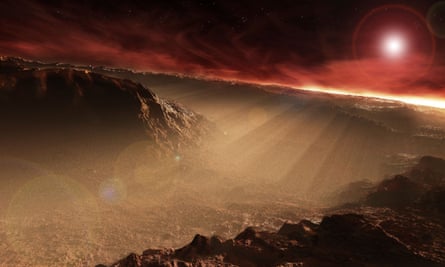
It was Mariner that put an end to the glory days of Old Mars, and to its sister planet, Old Venus, wet and watery, with its drowned cities, endless swamps, and web-footed Venusians. Mariner 2 (launched August 1962) was the first successful planetary flyby, reaching Venus after three and a half months of spaceflight. Mariner 4 (November 1964) did the same honours for Mars. Mariner 5 (June 1967) was another Venus probe. Mariner 6 (launched February 1969) and Mariner 7 (launched March 1969) were a Martian double-team. Mariner 8 was lost, but its sister Mariner 9 (May 1971) entered Martian orbit in November of that year, joining Phobos and Deimos to become a third Martian moon, the first artificial satellite of the red planet. Mariner 10, the last of the series, cruised by not only Venus, but Mercury as well, demonstrating that the innermost planet did not, in fact, keep one face perpetually turned toward the sun, as had been previously believed.
And all of that would have been tremendously exciting, only the Mars that Nasa discovered was not the Mars of Lowell and Edgar Rice Burroughs, of Brackett and Moore. The Mariner probes found no trace of cities, living, dead or dying. No Tharks, no thoats, no Martians of any hue or colour. Lowell’s network of artificial canals was not in evidence, and neither were Schiaparelli’s “channels”. Instead, there were craters; the real Mars resembled Luna much more than it did Barsoom. And beneath those clouds, instead of swamps and dinosaurs and web-footed Venerians, Venus was a toxic hell, volcanic, sulfuric, far too hot for humans to survive.
Mariner’s findings thrilled scientists around the world and gave us a detailed and accurate picture of the nature of the inner planets, but for the readers and writers of science fiction, the excitement was mingled with disillusionment and dismay. This was not the Mars we wanted. This was not the Venus of our dreams.
I never wrote that Mars story. Nor any stories on Venus, or Mercury, or any of the worlds of the “lost” solar system of my youth, the worlds that had provided the setting for so many wonderful tales during the 30s, 40s and 50s. In that I was not alone. After Mariner, our genre moved to the stars in a big way, searching for the colourful exotic settings and alien races that could no longer be found here “at home”.
Science fiction did not entirely abandon Mars as a subject after the Mariner probes. The occasional story and novel continued to be written. But these new tales were set upon the “new Mars”, the real Mars, Mariner’s Mars. Kim Stanley Robinson’s award-winning trilogy about the colonisation and terraforming of the fourth planet – Red Mars, Green Mars and Blue Mars – was the most ambitious and memorable of those, and a worthy effort it was.
Overall, though, the number of science-fiction stories set on Mars and its sister planets declined sharply after Mariner. The real Mars was simply not as interesting as its pulp predecessor. Post-Mariner, when we talked about the possibility of life on Mars, we were talking about microbes or maybe lichen (though even lichen seemed to be pushing it), not sandmice and thoats. And while the discovery of Martian life would no doubt be electrifying to biologists and space scientists around the world, there has never been a microbe with the appeal of Dejah Thoris.

And so the lichens triumphed. Dejah Thoris and all her fellow Martians were banished to the outer darkness and the backlist, never to be seen again, not even in the movies.
But I was not the only one who missed the Martians, which brings us to Old Mars, a collection of 15 brand-new stories about Old Mars, lost Mars, the Mars of the canals and the dead cities and the Martians. With a few very notable exceptions, the contributors to this volume began their careers after Mariner. Like me, they grew up reading about Old Mars but never had the chance to write about it. That Mars was a lost world, gone forever.
Or maybe not.
Yes, the Mars of Lowell and Bean and Brackett and Moore and Bradbury does not exist, but why should that mean we cannot write about it? Science fiction is and always has been part of a great romantic tradition in literature, and romance has never been about realism.
Purists and fans of “hard SF” and other people with sticks up their butts may howl that the stories in Old Mars are not “real science fiction”. So be it. Call them “space opera” or “space fantasy” or “retro-sf” or “skiffy”, any term you like. Me, I call them “stories”, and like all stories, they are rooted in the imagination. When you come right down to it, I don’t think “real” matters nearly as much as “cool”.
Mariner could not find Old Mars. But you can.
- Old Mars edited by George RR Martin and Gardner Dozios (Titan Publishing Group, £8.99). To order a copy for £7.19, go to bookshop.theguardian.com or call 0330 333 6846. Free UK p&p over £10, online orders only. Phone orders min. p&p of £1.99.
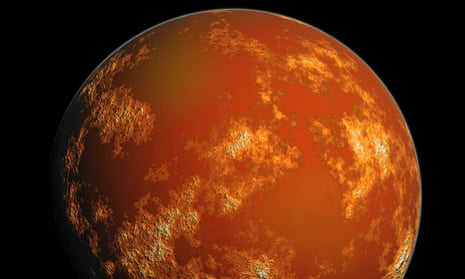
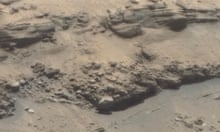
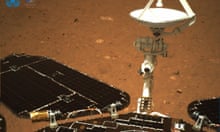




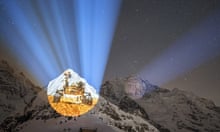


Comments (…)
Sign in or create your Guardian account to join the discussion